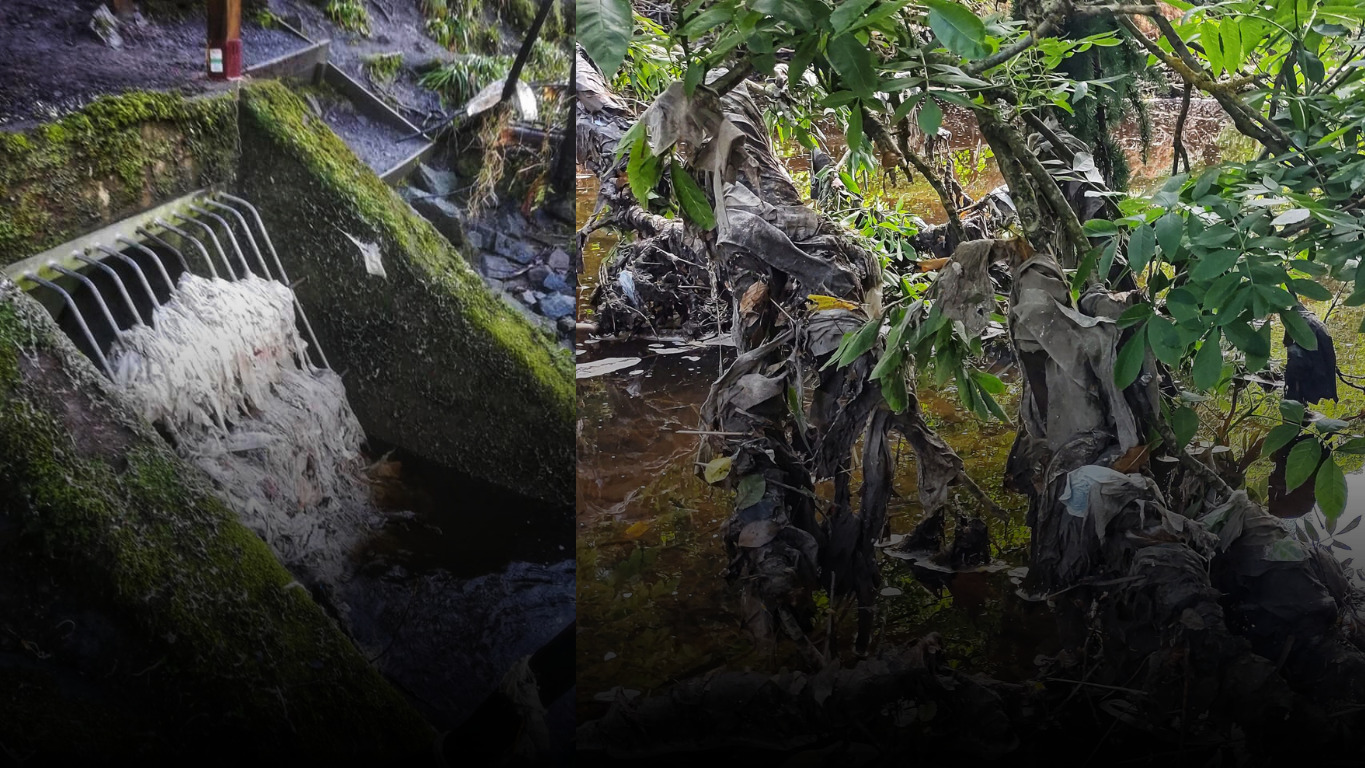Scotland’s environment agency has had to change the way it regulates sewage in rivers after an intervention by a standards watchdog over alleged failings.
As reported by The Ferret in September, new watchdog Environmental Standards Scotland (ESS) was looking into a complaint that the Scottish Environment Protection Agency (Sepa) broke the law by failing in its duty to prevent sewage discharges into the River Almond.
But critics say changes made as a result of the ESS probe are ‘inconsequential’ and will not prevent further pollution.
Residents near the river, which flows through West Lothian, have long complained of sewage pollution.
They claimed Sepa had taken no action to clean it up despite discharges from sewage works causing wet wipes and sanitary waste to be strewn across the river. Water had become discoloured and “foaming and fungus” had appeared on its surface, locals told us in September.
An investigation by ESS – which was set up post-Brexit to maintain environmental standards – has now concluded. It found confusion about the way Sepa responds to reports from the public about pollution from sewage works.
The guidance Sepa staff used to decide whether sewage works have breached pollution rules was “unclear” and “unhelpful”, ESS claimed.
We need an affordable and accessible environmental court, so that members of the public can directly challenge law-breaking.
Ben Christman, ERCS
This called into question “the effectiveness of how environmental law is being implemented by Sepa”, ESS said.
Sepa has now changed these guidelines after discussions with ESS. Both bodies said the move will make Sepa’s systems clearer, more effective, and easier for the public to understand.
But the Environmental Rights Centre for Scotland (ERCS), which lodged the complaint in December 2022 leading to the investigation, claimed the ESS’ intervention was “inconsequential”.
ERCS, which campaigns for environmental justice, said there was “chronic pollution” in the Almond from sewage works and that it had seen photos of pollution which “seem clearly unlawful”.
“We sent Sepa evidence of several pollution incidents, but Sepa refused to take enforcement action to stop the pollution or order its cleanup,” ERCS’s in-house solicitor, Ben Christman, told The Ferret.
He continued: “Instead of tackling Sepa’s breach of legal duty, ESS instead arranged for some guidance to be amended.
“We did not raise any issues with the guidance. Sepa have never raised the guidance as a barrier to taking enforcement action. ESS’s intervention is inconsequential.”
Christman added that sewage problems in the Almond were “evidence of systemic failures in environmental governance in Scotland”.
He said: “Our environmental regulators are ineffective. We need an affordable and accessible environmental court, so that members of the public can directly challenge law-breaking.”

The River Almond Action Group, a community group formed to tackle sewage issues in the river, said it is “very disappointed” in Sepa.
A spokesperson said: “We were hopeful that Sepa would take this opportunity to really step up their game and unfortunately they haven’t.
“People are losing patience with a state funded regulatory body that isn’t doing a good enough job. We are considering our next steps in calling them to task and ending water pollution.”
Sepa has a legal duty to monitor breaches of environmental rules governing the operators of sewage treatment plants. Where breaches are identified, the regulator has enforcement powers, including removing a sewage work’s licence to operate, or taking legal action against the firm which owns it.
When assessing pollution from sewage works, Sepa staff use official guidelines which are supposed to help them gauge whether discharges have had a “significant” impact on the water environment and merit further action.
However, ESS said it was unclear how Sepa decided what constituted ‘significant’ pollution.
ESS’ chief executive, Mark Roberts, said the “strengthening” of these guidelines after its probe “creates a more effective framework for ensuring compliance and enforcement and protecting the environment from harm”.
Roberts added: “ESS’ role is to investigate concerns raised in representations. We will reach our own, independent conclusions and recommend the best course of remedy.
“Based on our work on this case, there is now greater clarity for the public about how Sepa defines a breach of licence conditions for wastewater treatment works. It is now clearer about the environmental impact of a breach and what Sepa’s enforcement response may be.”
Sepa’s head of water and planning, Nathan Critchlow-Watton, said Scotland’s water quality was “at its highest ever level” with “87 per cent of Scotland’s water bodies and 84 per cent of our bathing waters classified as good or better”.
He said: “We have recently supported an investigation by ESS, relating to our regulation of waste water treatment works. We have clarified our guidance to staff as a consequence and we are pleased to have reached an informal resolution with ESS.
“ESS has confirmed that Sepa has taken reasonable steps to address the concerns raised in respect of how it implements its duties.”
Cover image thanks to River Almond Action Group.














